Pork Loins or Tenderloins: Which Cut Should Win?
Pork loins and tenderloins might seem similar yet they represent two distinct cuts from the pig.
Both popular meat options grace dinner tables worldwide, each bringing unique qualities to countless recipes.
Skilled chefs often select one over the other based on specific cooking methods and desired outcomes.
The main differences involve size, fat content, cooking time, and flavor profiles.
Many home cooks accidentally substitute these cuts, leading to unexpected results in the kitchen.
Butchers typically display both options in meat departments, though pricing and availability may vary seasonally.
Understanding these two cuts will transform how you approach pork dishes and help create more successful meals.
A Simple Guide to Pork
Pork is the meat derived from domestic pigs and is one of the most widely consumed meats worldwide. It offers a versatile range of cuts, each suited for different cooking methods like roasting, grilling, braising, or frying.
Pork is prized for its rich flavor and ability to absorb marinades and spices well. Nutritionally, pork provides a good source of protein, essential vitamins such as B vitamins, and minerals like zinc and iron.
While lean cuts are lower in fat, some parts can be higher in saturated fat, so choosing the right cut and cooking method is key for a balanced diet.
Pork Shoulders
Pork shoulder muscles serve a key role in daily pig movement, resulting in dense connective tissue throughout this area. These cuts tend to be tougher compared to other parts of the pig, making them perfect candidates for roasting or smoking methods.
Their robust nature allows them to handle generous seasoning and extended cooking at low temperatures. Knowing exactly how long to smoke pork shoulder at 225 degrees is essential for creating a delicious meal that properly breaks down those tough fibers.
Pork Loins
Pork from the back of the pig offers many delicious options for your family meals. Several popular cuts come from this area, including pork loin, tenderloin, ribs, and chops.
Most back cuts feature lean muscle with minimal fat underneath the skin. Unlike shoulder sections, back cuts contain fewer connective tissues, making them both tender and lean.
Proper cooking techniques help preserve these natural qualities in your meals. For juicy pork chops, knowing the correct baking time at 350 degrees prevents dryness and tough texture.
Pork loin makes an excellent choice when time is limited since it cooks relatively quickly compared to other cuts. These back cuts balance convenience with flavor for satisfying meals any day of the week.
Pork Sides
Side pork gets its name from the less active area of the pig, which results in meat with fewer muscles and more fat content. Less-common cuts such as pork belly and spare ribs come from this region.
Most Americans tend to avoid these cuts because of their high saturated fat levels, though they offer incredible tenderness and rich flavor that lean cuts can't match. For those curious about specific pork options, the loin and tenderloin are two popular choices worth exploring in detail.
Knowing which cooking methods work best for each cut can transform your meals from ordinary to exceptional.
Pork Loins vs. Tenderloins Explained
Several clues help you spot the differences between pork loin and pork tenderloin at the meat counter.
Beyond what your eyes can tell you in the store, our comparison table gives a clear breakdown of how these cuts differ from one another.
| Feature | Pork Loin | Pork Tenderloin |
| Other Names | Center Loin Roast, Pork Center Rib Roast | Gentleman’s Cut, Pork Filet, Pork Steak |
| Part of Pig | Back, between ribs and back fat | Muscle along central spine, above ribs and belly |
| Size | Large, up to 5 pounds, can be cut to order | Smaller, usually about 1 pound, sold whole |
| Shape | Flat, slab-like | Thin, narrow, cylindrical |
| Bones | Sometimes bone-in or boneless | Always boneless |
| Fat Content | Has a fat cap to tenderize lean meat | Very lean, no fat cap |
| Silverskin | No silverskin | Has silverskin (tough connective tissue) |
| Texture & Flavor | Leaner, tougher but flavorful due to fat | Most tender cut, milder flavor, best for marinades |
| Price | Less expensive, about $1.99/lb | More expensive, $2.99–$3.99/lb |
| Culinary Uses | Best for roasting, slow cooking, grilling | Ideal for quick grilling, marinating, roasting |
| Cooking Tips | Avoid overcooking to prevent toughness | Remove silverskin, don’t overcook to keep moistness |
Part of the Pig
Though their names sound similar, pork loin and pork tenderloin come from distinct parts of the pig. The pork loin is sourced from the back, situated between the ribs and the back fat.
It consists mainly of the loin muscle and usually has a fat cap attached. On the other hand, pork tenderloin is a narrow muscle running along the central spine, above the ribs and belly.
This muscle isn’t heavily used by the pig, which explains why tenderloin is naturally more tender than loin.
Size
One of the most obvious differences between pork loin and tenderloin is their size. Pork loin is a large cut that can weigh up to five pounds, making it ideal for larger meals or for cutting into portions.
Pork tenderloin is much smaller, typically sold whole and averaging about one pound per piece. Its compact size makes it perfect for quick cooking and recipes requiring smaller portions.
Shape
Pork loin and tenderloin differ notably in shape. Pork loin is flat and broad, resembling a slab of meat, which makes it well-suited for roasting whole or slicing into chops.
Pork tenderloin, however, is long, thin, and cylindrical. This shape contributes to its quick cooking time and uniform tenderness, but it also requires different handling in recipes compared to the flatter pork loin.
Bones
When purchasing pork loin, you might find it either with the bones still attached or boneless, giving some flexibility depending on your cooking preference. Bones can add flavor and moisture during cooking, especially in roasts.
Pork tenderloin, by contrast, is always sold boneless, as it is a small, lean muscle that naturally does not have bones, making it convenient for quick preparation.
Fat Content
Pork loin features a noticeable fat cap, which plays a vital role in keeping the meat juicy and adding rich flavor during cooking. This layer of fat helps tenderize the lean meat beneath as it melts.
Conversely, pork tenderloin is very lean and lacks this fat cap, which contributes to its delicate, mild flavor but also means it can dry out quickly if overcooked. The low fat content makes tenderloin a favorite for healthier dishes but requires careful cooking.
Texture and Flavor Profile
Pork loin is leaner and slightly tougher than tenderloin, but its surrounding fat adds significant flavor, making it meatier and richer. It’s suitable for roasting or slow cooking where the fat has time to render and infuse the meat.
Pork tenderloin, prized as the most tender cut of pork, has a much softer texture and a milder flavor due to its low fat content. This makes tenderloin ideal for dishes that rely on marinades or quick cooking methods that preserve moisture.
Price
Pork tenderloin is generally more expensive than pork loin due to its tenderness and lean profile. Pork loin is more affordable, partly because it is tougher and sold in larger quantities.
For budget-conscious cooks, pork loin offers better value, especially when feeding a crowd.
Culinary Uses
The differing textures and flavors of pork loin and tenderloin dictate their best uses in the kitchen. Pork tenderloin’s tenderness and mild flavor make it perfect for grilling, quick roasting, or dishes requiring marinating.
Removing silverskin is essential to ensure tenderness. Pork loin, being tougher but fattier, shines in slow-cooked recipes, roasts, or pan-seared preparations that benefit from its fat cap.
Both cuts offer versatility but require different techniques for optimal results.
Nutritional Values
Nutritionally, pork loin and tenderloin are quite similar, both being excellent sources of high-quality protein with low carbohydrate content. Per 100 grams, cooked lean pork provides roughly 26 grams of protein, minimal fat (around 3.5 grams), and about 143 calories. They are also good sources of essential minerals like magnesium, phosphorus, and potassium.
Including pork in your diet supports muscle maintenance and overall nutrition without excessive carbohydrates.
Silverskin
A key structural difference lies in the presence of silverskin on pork tenderloin. Silverskin is a grayish, tough layer of connective tissue that doesn’t break down during cooking.
It can make the meat chewy and less enjoyable if not removed prior to cooking. Pork loin does not have this silverskin, making it easier to prepare without this extra step.
Swapping Pork Cuts: Loin vs Tenderloin Success Tips
Many people wonder about swapping pork loin and tenderloin in recipes, and the answer isn't straightforward. While these cuts can technically replace each other in a pinch, it's not ideal due to their different cooking needs.
Pork loin has more size, toughness, and a meatier flavor compared to the light, mild tenderloin, so cooking methods aren't interchangeable between them. The loin contains fat that helps it stay moist during longer cooking times, whereas tenderloin lacks this fat protection and dries out quickly, making it suitable only for quick, high-heat cooking.
For better substitutions, sirloin roast works well instead of pork loin since both come from the pig's back area. Thick-cut bone-in pork chops make a good tenderloin alternative because they offer similar leanness and tenderness.
Seasoning Tips for Pork Loin and Tenderloin
Serving Suggestions for Pork Loins and Tenderloins
Pork tenderloin works well sliced thin in salads, sandwiches, or wraps, making it a flexible protein for lighter meals.
Tenderloin’s subtle taste pairs nicely with bold marinades and sauces such as soy-ginger, barbecue, or citrus-based dressings, which add brightness and complexity.
For side dishes, consider fresh vegetable medleys, quinoa or rice pilafs, or crisp green salads. Because of its leanness, tenderloin is often served with a sauce or chutney to enhance moisture and flavor.
Melt-in-Your-Mouth Pork Tenderloin Recipes
Pork tenderloin stands out as the most tender part of the pig, which means it deserves extra care when cooking. Several tasty recipes can help you bring out its full flavor while keeping the meat juicy and delicious.
Pork Tenderloin With Honey Garlic Sauce
Garlic and pork tenderloin create an amazing flavor duo that hits all the right taste notes - savory, umami, and just a bit sweet. When honey joins this mix, the result becomes truly special in ways words can't fully describe.
My advice? Give this combo a try and see for yourself why these flavors work so perfectly together.
One great bonus with this recipe is how well it handles leftovers - any extra portions can go straight into your freezer where they'll stay delicious for up to two months, saving you from wasting any of this tasty dish.
Best Oven Baked Pork Tenderloin
Perfectly cooking pork tenderloin might seem tricky, but baking offers an excellent method to ensure even doneness while allowing the meat to absorb all your added flavors. My simple approach takes away that worry completely.
With the right temperature and timing, your tenderloin will turn out juicy and flavorful every time. No more dry or undercooked sections when you follow these straightforward steps.
The oven does most of the work for you, creating that beautiful all-around heat that makes the difference between good and great results. Soon you'll master this technique and wonder why it ever caused concern.
Bacon-Wrapped Stuffed Pork Tenderloin
Bacon-wrapped pork tenderloin ranks as my top choice when adding that smoky magic to dinner. My family goes wild for this dish because the bacon adds both flavor and helps keep the meat super juicy.
You can make it on busy weeknights since it takes just minutes to prepare before popping it in the oven. The secret lies in how the fat from the bacon melts slowly, basting the lean tenderloin as it cooks.
Many people who claim not to enjoy pork change their minds after trying this simple but impressive meal. The contrast between the crispy exterior and the tender inside creates an amazing taste experience that works well with almost any side dish.
Juicy Pork Loin Recipes to Enjoy
Pork loin stands as a must-know dish for anyone who like to spends time in the kitchen. With a few tips, even beginners can master how salt, pepper, garlic, and rosemary work together to enhance the meat's natural taste.
Dutch Oven Pork Loin Roast
Slow roasting pork loin until it's tender and juicy becomes much easier with a dutch oven by your side. The hefty lid and cast iron body trap moisture inside, preventing any unwanted dryness during cooking.
Before placing the meat in this wonderful pot, taking time to sear all sides is important because steam can stop proper browning from happening. A light coating of flour on the loin helps create that delicious golden crust many home cooks love.
This simple method gives you amazingly moist results that fall apart with just a fork, making dinner both impressive and easy to prepare.
Easy BBQ Pulled Pork
Knowing how to make delicious pulled pork should be on everyone's cooking list - it's a crowd-pleaser that never fails to impress. My recipe creates juicy, flavor-packed meat that falls apart with just a fork touch and makes any gathering better.
People will ask for seconds when you bring this to potlucks, and the best part is how simple it really is to make. The slow cooking process lets all those spices meld together, creating that mouthwatering taste without much effort from you.
Next time you need to feed a hungry group, this pulled pork will become your secret weapon for food success.
Slow Cooker Pork Loin Recipe
Pork loin stands out as a meat that pairs wonderfully with sweet and tangy fruits, especially pan-seared apricots. Sunday dinner can be much easier when you let your slow cooker do all the work for this delicious dish.
Our simple crockpot method takes just minutes to prepare but delivers tender, juicy results every time.
Got Questions? We’ve Got Solutions
1. Are pork loins and tenderloins from the same part of the pig?
No, they come from different parts. Pork loin is cut from the back of the pig, while tenderloin is a small strip of meat from beneath the backbone.
2. Which cut is more expensive - pork loin or tenderloin?
Tenderloin is typically more expensive because it's smaller and considered more tender, making it a premium cut.
3. Can I substitute pork loin for tenderloin in recipes?
Yes, but you'll need to adjust cooking times. Pork loin is thicker and requires longer cooking, while tenderloin cooks quickly due to its smaller size.
4. How can I tell if pork loin or tenderloin is cooked properly?
Both cuts should reach an internal temperature of 145°F (63°C) and rest for 3 minutes. They'll be slightly pink inside but safe to eat at this temperature.

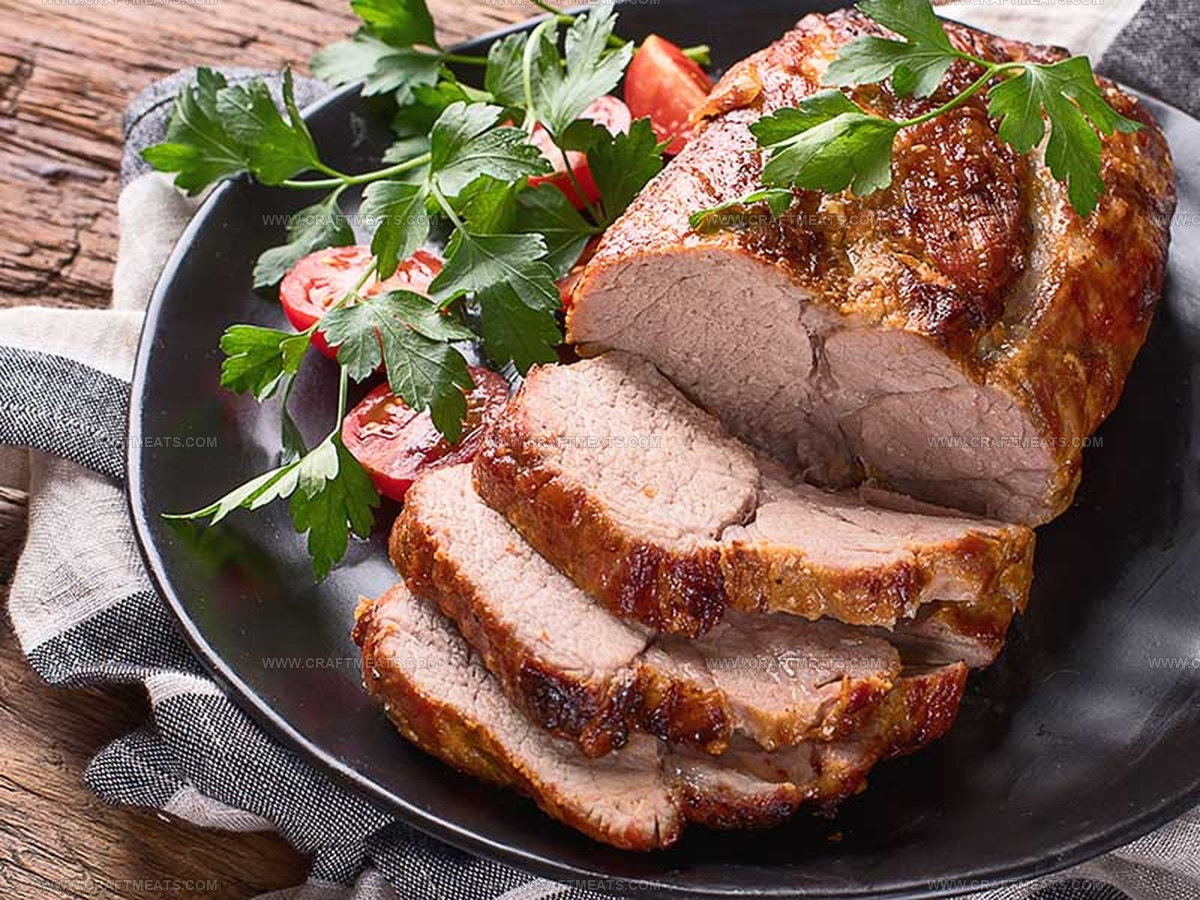
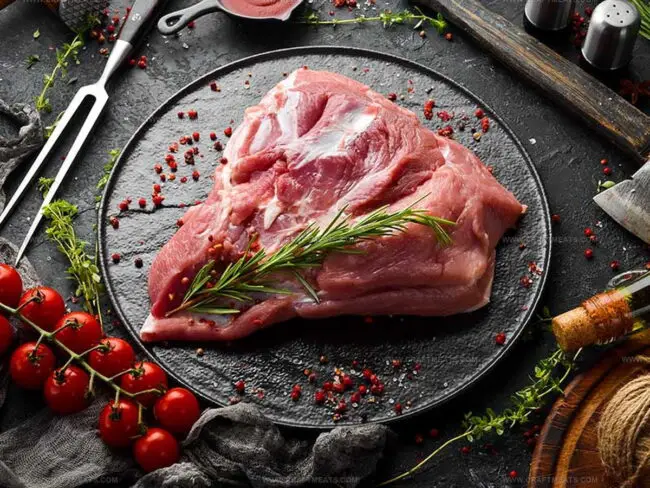
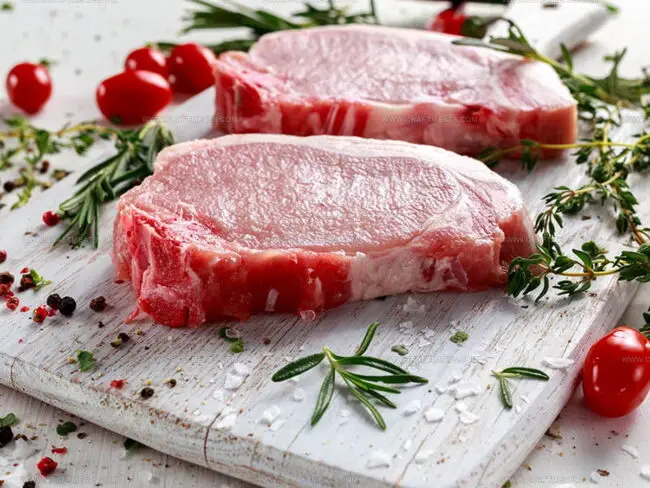

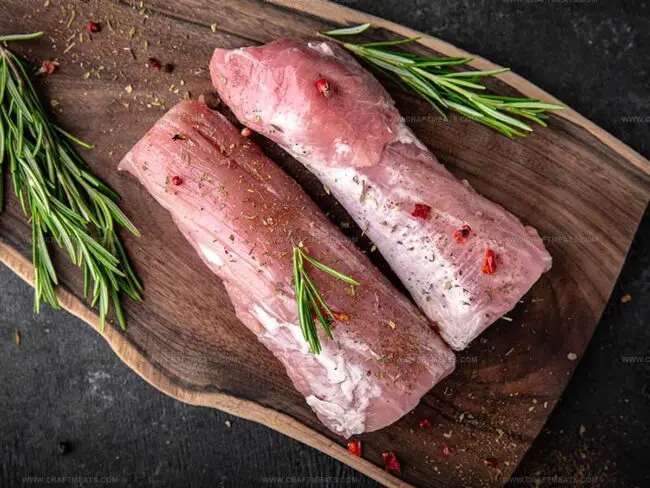

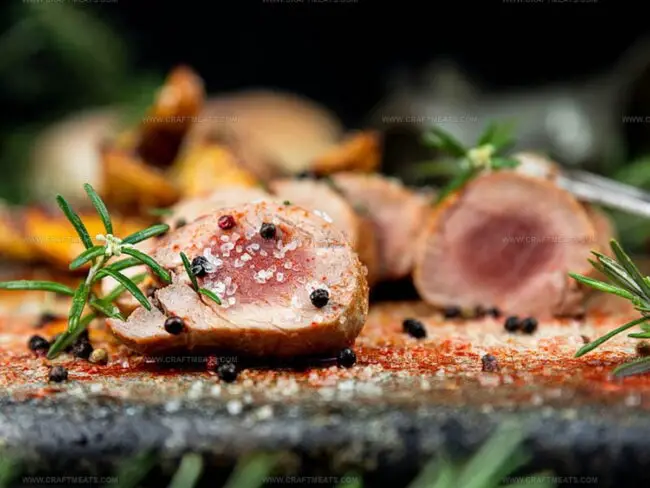
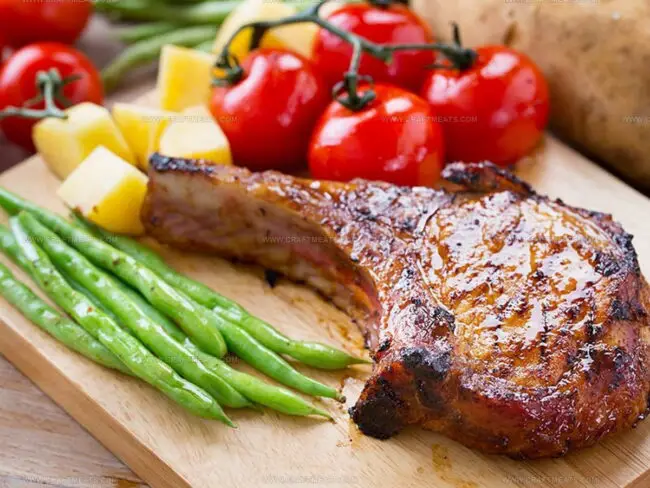

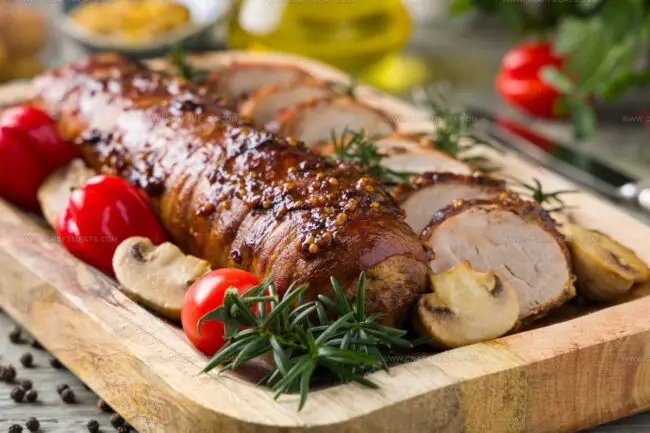
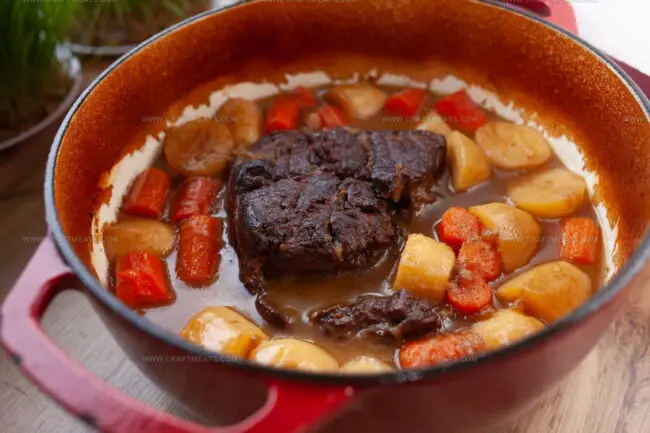
Liam O’Sullivan
Founder & Culinary Content Creator
Expertise
Recipe Development, Traditional Irish and European Cuisines, Food Styling and Photography, Culinary Education
Education
Dublin Institute of Technology (DIT) – School of Culinary Arts and Food Technology
Ballymaloe Cookery School
Isabella brings a global spark to the Craft Meats table. Born in Florence and trained at the Apicius International School of Hospitality, she blends classic Italian flavor with modern writing that’s easy to follow and hard to forget.
Her additional training at the Italian Chef Academy fueled her love for well-crafted dishes, especially ones that spotlight beautiful cuts of meat.
She’s a food writer with heart, and a deep love for storytelling through single recipes. Her goal? To help you cook with more confidence and a little more joy, no matter where you start.